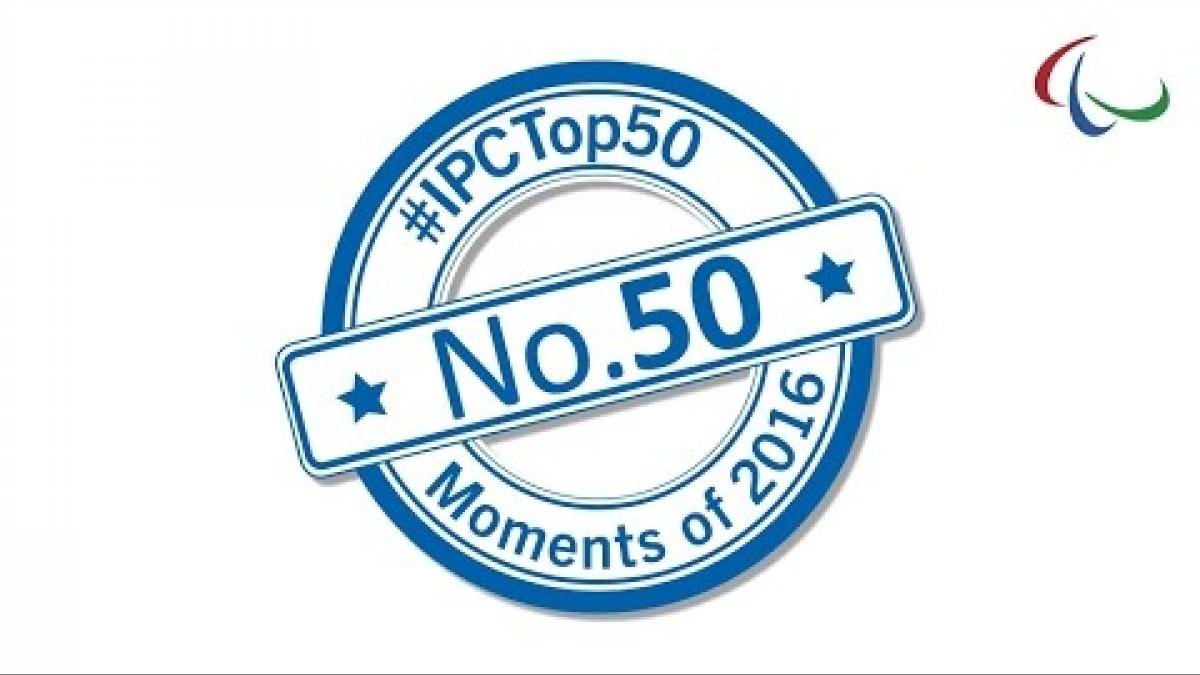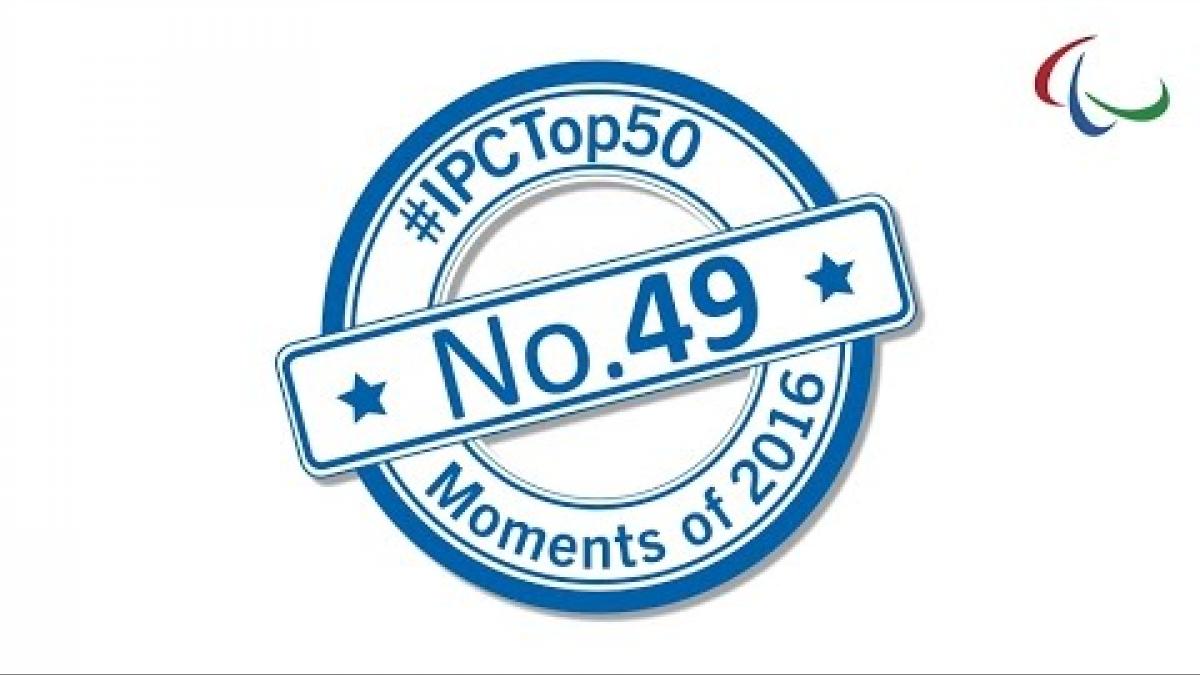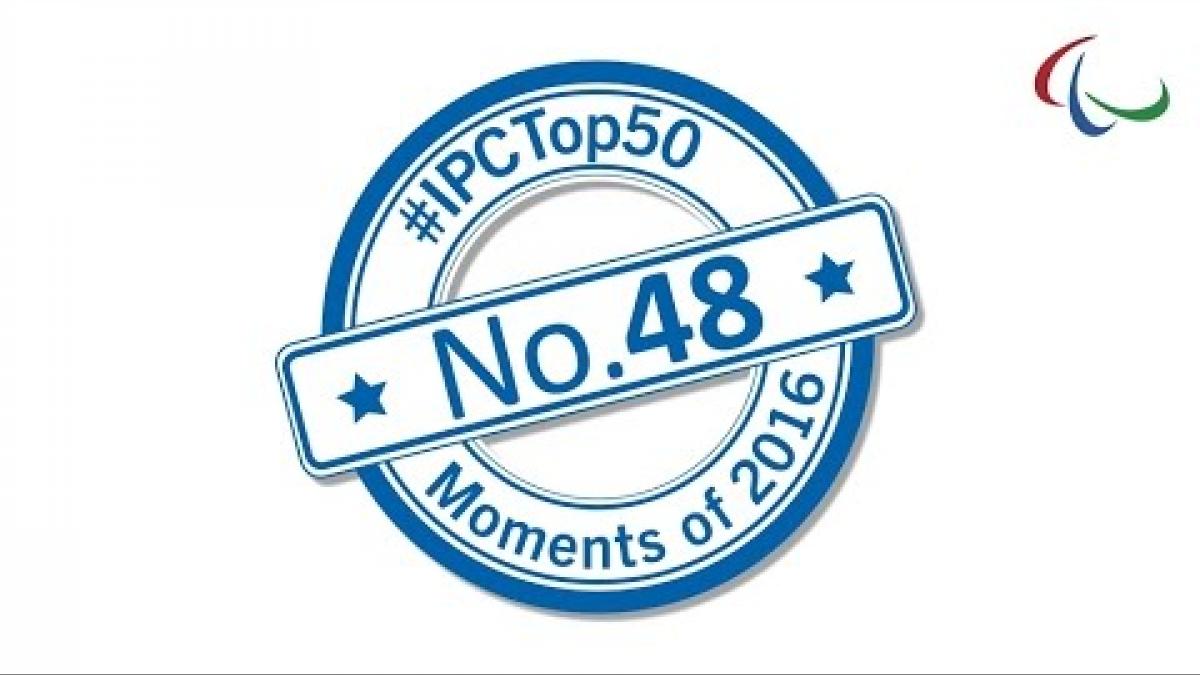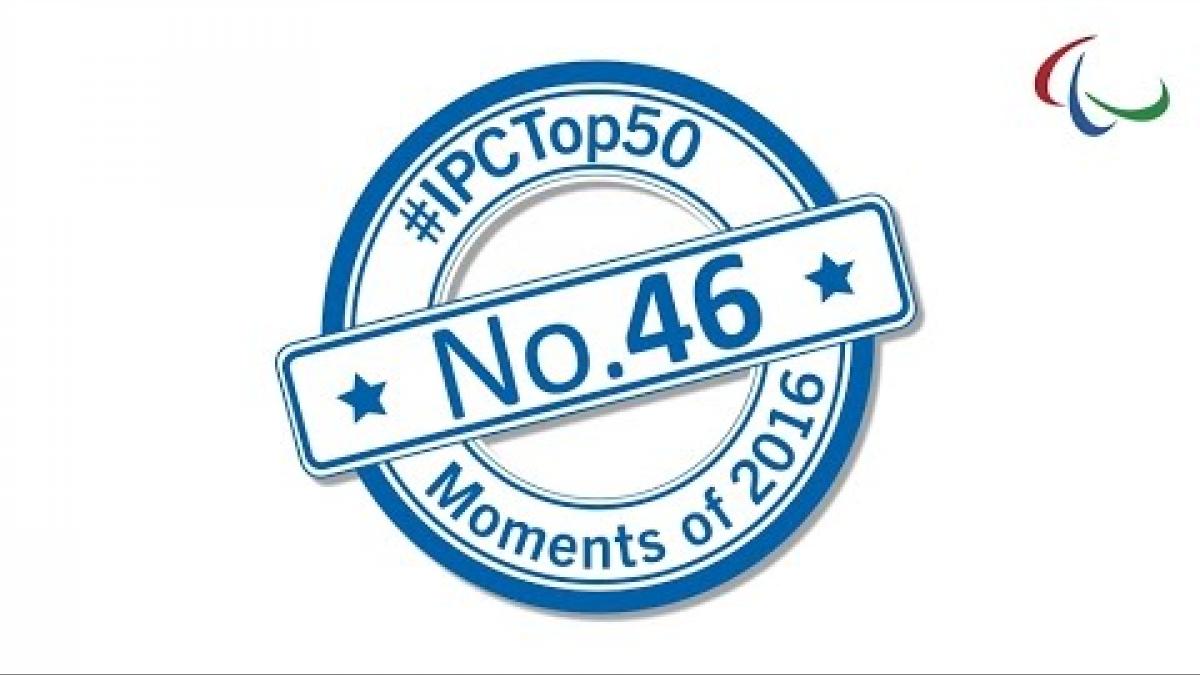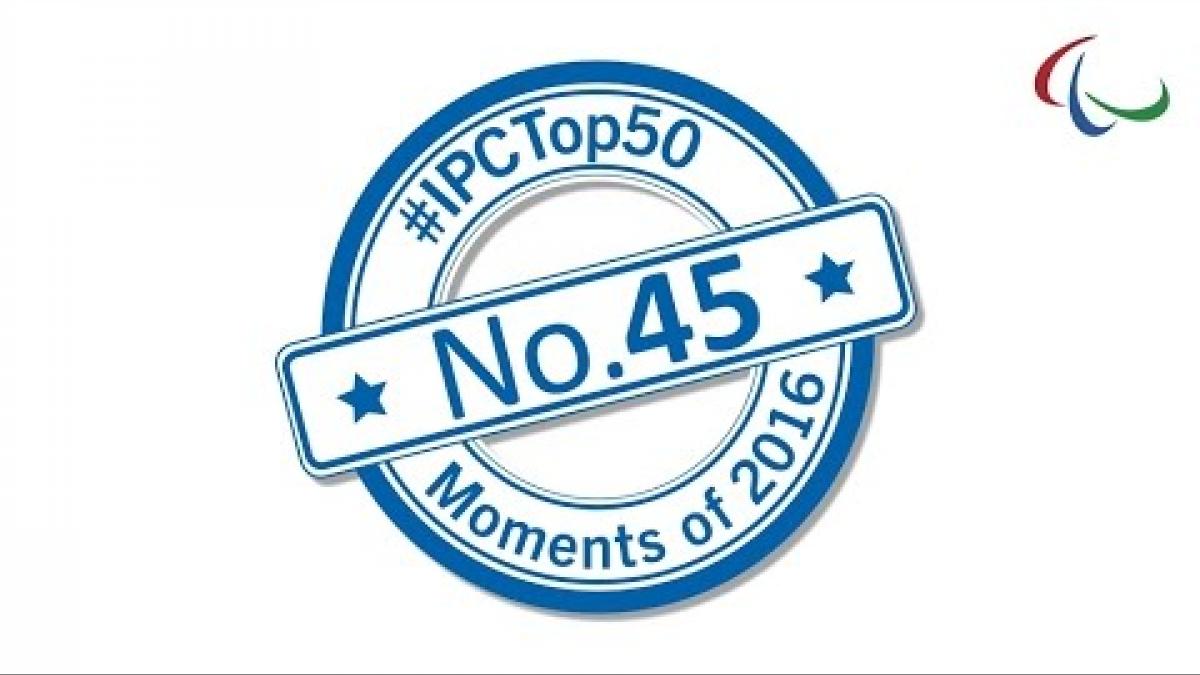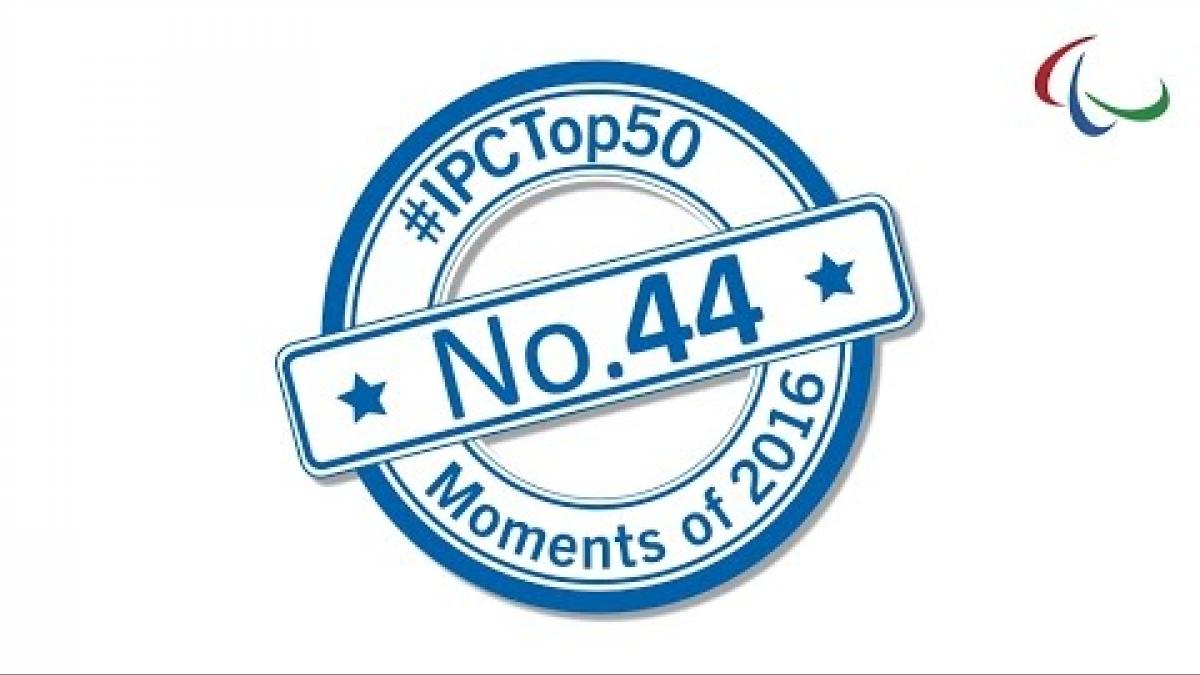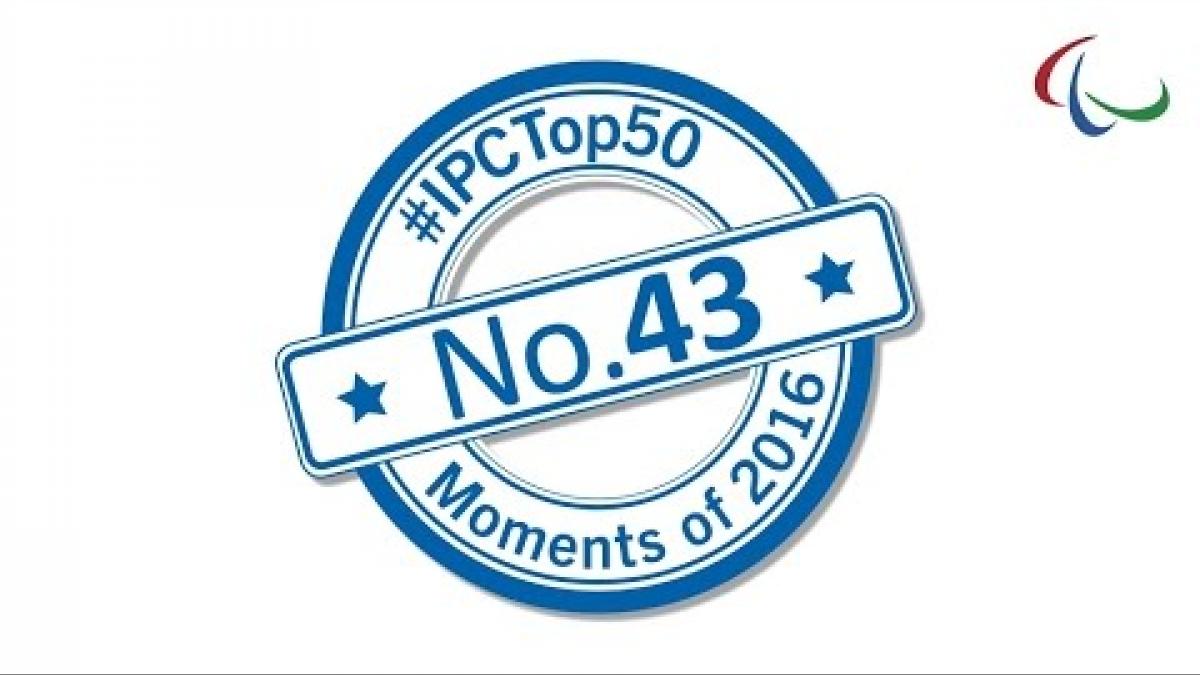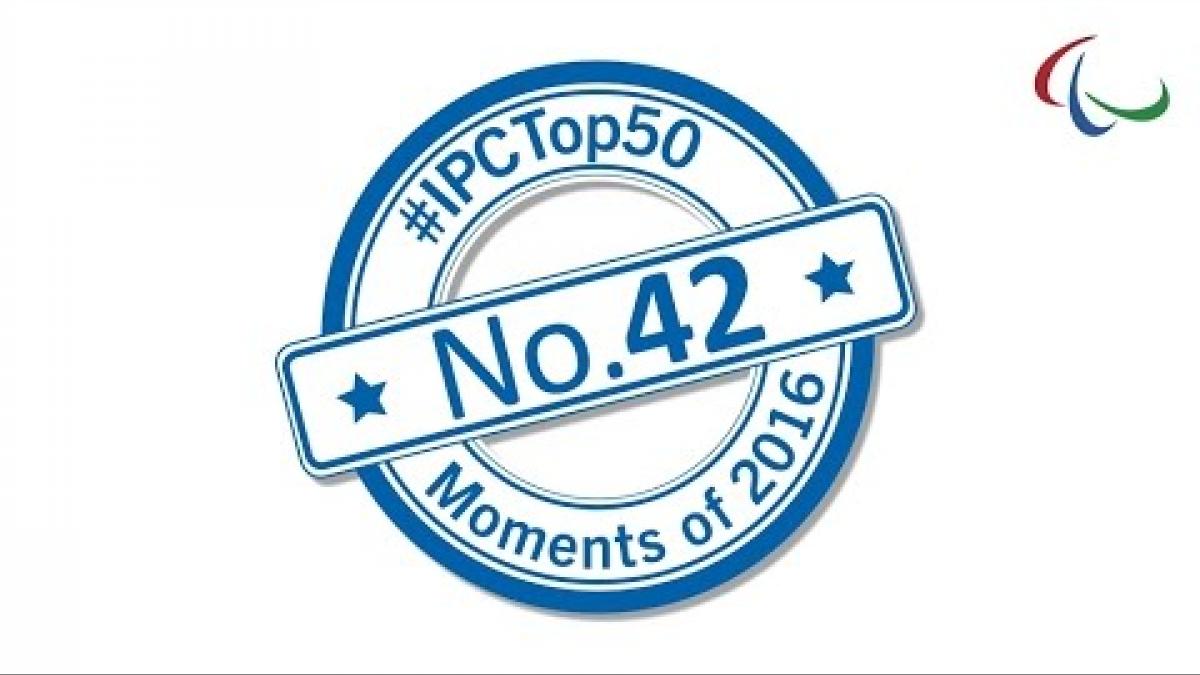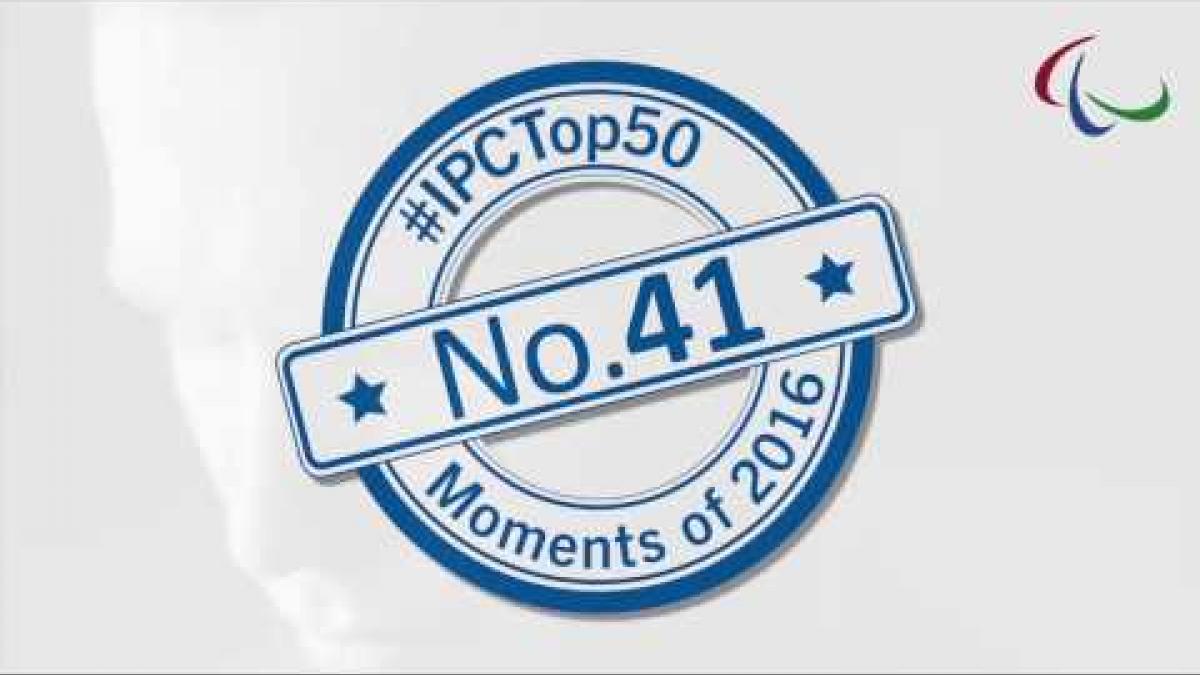No. 40 Big year for Para taekwondo athletes
This year was huge for athletes such as Amy Truesdale and Mahdi Pourrahnama, and also saw the first refugee athlete compete. 22 Nov 2016“I saw that winning in Para taekwondo doesn't come easy and that you have to learn and train a lot for it."
Since being announced to the Tokyo 2020 programme, Para taekwondo has not taken its foot off the pedal, showing continued growth.
This year was especially significant. Five Continental Championships were held and world ranking points that go toward next year’s World Championships were at stake, further building up the sport toward its Paralympic debut and entering the International Paralympic Committee’s (IPC) Top 50 Moments of 2016 at No. 40.
“In 2015 the WTF [World Taekwondo Federation] took the decision to make the World Para Taekwondo Championships an event only held every two years,” said Olof Hansson, manager of Para taekwondo at the WTF. “This would create an opportunity to further develop the Continental Para Taekwondo tournaments to assure that all athletes had at least one high-level international tournament in their continent.
“This has allowed more athletes access to international classification and to compete at an international level. It has also helped add another, much needed, step on the road from grassroots to World Championships.”
Since being included on the Tokyo 2020 programme last year, stakes for athletes have been raised and notable performances have stood out.
Among those was Great Britain’s Amy Truesdale at the 5th European Para Taekwondo Open Championships in September in Warsaw, Poland.
After a long season of losses, Truesdale won gold and regained her No. 1 title in the women’s K44 over 58kg division.
“I was very happy with my first place in the Europeans I felt the additional training I did prior to this competition paid off,” Truesdale said. “Once again it was a well organised competition which is continually increasing in athlete participation which makes the competition and my first place result more exciting.”
Those European Open Championships also saw the first ever Para taekwondo refugee athlete compete; Hadi Hassanzada took on the men’s K42 under 61kg and finished fifth,showcasing the extended reach of the sport.
"It was a good experience for me and I liked to see all the other Para taekwondo athletes,” Hassanzada said. “Seeing them training together and watching them fighting in competition motivates me.
“I saw that winning in Para taekwondo doesn't come easy and that you have to learn and train a lot for it.
“It was special for me to be able to participate in such a big event and to share this experience with all the other athletes."
Sita Bhandari, who competes in the women’s K44 under 58kg division, was recognised as Para Athlete of the year in Nepal in the Pulsar Sports Awards ceremony; she took bronze at the 2nd Asian Para Taekwondo Open Championships held in Manila, the Philippines.
Iran’s Mahdi Pourrahnama (men’s K44 up to 75kg) had a solid year. He took gold at the Asian Championships, but suffered his first loss in four years in the final at the European Open. Pourrahnama also took part in a Para taekwondo demonstration match held during the taekwondo competitions of the Rio 2016 Olympics.
Also held in 2016 were the 2nd Oceania Championships, 1st African Championships and 4th Pan American Para Taekwondo Championships – all Open Championships. The Pan American competition included classes for athletes with an intellectually disability (P20) and athletes with a neurological impairment (P30 classes), reflecting the WTF’s commitment to providing opportunities for all.
For Honduras’ Guillermo Erazo, those Championships were even more special as he won gold in the men’s P20 poomsae and marked his first time competing against athletes with an intellectual impairment.
At Tokyo 2020, athletes will compete in kyorugi (limb impairments and athletes with an arm amputation).
To find out more about the IPC’s Top 50 Moments of 2016, visit the dedicated page on the IPC’s website.






